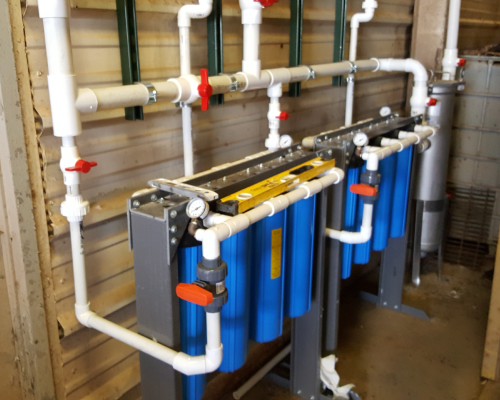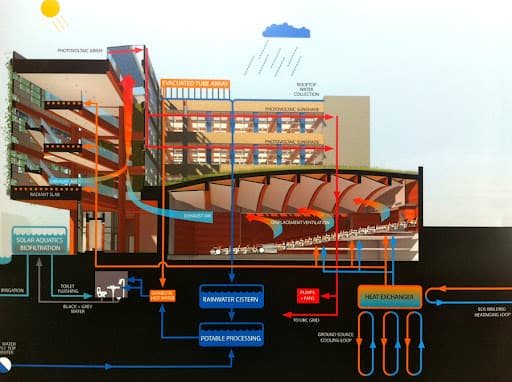The Basics of Your House's Plumbing System Anatomy
Click HereWhat are your thoughts on Anatomy of a House: Understanding the Components?

Understanding exactly how your home's pipes system works is necessary for every single homeowner. From providing clean water for alcohol consumption, food preparation, and bathing to securely getting rid of wastewater, a well-maintained plumbing system is critical for your family's health and comfort. In this extensive overview, we'll discover the intricate network that makes up your home's plumbing and offer ideas on upkeep, upgrades, and handling typical problems.
Intro
Your home's pipes system is more than just a network of pipelines; it's a complicated system that ensures you have accessibility to tidy water and reliable wastewater removal. Recognizing its elements and how they collaborate can aid you prevent expensive fixings and guarantee whatever runs efficiently.
Standard Components of a Pipes System
Pipelines and Tubing
At the heart of your plumbing system are the pipelines and tubes that carry water throughout your home. These can be made from numerous materials such as copper, PVC, or PEX, each with its benefits in regards to resilience and cost-effectiveness.
Components: Sinks, Toilets, Showers, and so on.
Components like sinks, toilets, showers, and bathtubs are where water is used in your house. Recognizing just how these components attach to the pipes system aids in detecting issues and preparing upgrades.
Shutoffs and Shut-off Points
Valves manage the flow of water in your plumbing system. Shut-off valves are crucial during emergencies or when you require to make fixings, permitting you to separate parts of the system without interfering with water circulation to the whole home.
Supply Of Water System
Main Water Line
The main water line attaches your home to the metropolitan water system or a personal well. It's where water enters your home and is distributed to numerous components.
Water Meter and Stress Regulator
The water meter steps your water usage, while a stress regulatory authority makes sure that water streams at a risk-free pressure throughout your home's plumbing system, protecting against damage to pipes and components.
Cold Water vs. Warm water Lines
Comprehending the difference in between cold water lines, which supply water directly from the major, and warm water lines, which carry heated water from the hot water heater, assists in repairing and preparing for upgrades.
Drain System
Drain Pipeline and Traps
Drain pipes lug wastewater away from sinks, showers, and toilets to the sewage system or sewage-disposal tank. Traps protect against drain gases from entering your home and also catch particles that could create clogs.
Ventilation Pipelines
Air flow pipelines enable air into the drainage system, protecting against suction that can reduce drain and trigger traps to vacant. Correct air flow is vital for maintaining the integrity of your pipes system.
Relevance of Proper Drainage
Making certain proper drainage protects against backups and water damages. Regularly cleansing drains and keeping traps can protect against costly fixings and prolong the life of your pipes system.
Water Heating Unit
Sorts Of Water Heaters
Hot water heater can be tankless or conventional tank-style. Tankless heating units warmth water on demand, while storage tanks store heated water for prompt use.
Just How Water Heaters Connect to the Pipes System
Understanding exactly how hot water heater connect to both the cold water supply and warm water distribution lines assists in detecting issues like not enough hot water or leaks.
Upkeep Tips for Water Heaters
Routinely flushing your hot water heater to remove sediment, examining the temperature settings, and checking for leakages can extend its life expectancy and boost power efficiency.
Typical Pipes Concerns
Leaks and Their Reasons
Leaks can happen due to maturing pipelines, loose installations, or high water pressure. Resolving leakages quickly protects against water damage and mold and mildew growth.
Blockages and Blockages
Blockages in drains pipes and bathrooms are usually caused by purging non-flushable items or an accumulation of oil and hair. Using drain screens and being mindful of what drops your drains pipes can prevent clogs.
Indications of Pipes Troubles to Expect
Low tide pressure, slow drains, foul odors, or uncommonly high water expenses are indications of possible pipes troubles that should be addressed quickly.
Pipes Upkeep Tips
Regular Inspections and Checks
Schedule yearly plumbing evaluations to capture concerns early. Look for signs of leaks, rust, or mineral build-up in taps and showerheads.
DIY Maintenance Tasks
Basic jobs like cleansing faucet aerators, checking for bathroom leakages making use of dye tablet computers, or shielding subjected pipelines in cool environments can stop significant pipes problems.
When to Call an Expert Plumbing Technician
Know when a plumbing issue calls for specialist competence. Trying complicated repair work without proper expertise can bring about more damage and higher fixing prices.
Updating Your Plumbing System
Reasons for Updating
Updating to water-efficient components or replacing old pipes can boost water top quality, minimize water expenses, and enhance the value of your home.
Modern Pipes Technologies and Their Advantages
Explore technologies like smart leak detectors, water-saving commodes, and energy-efficient hot water heater that can conserve cash and lower ecological influence.
Expense Factors To Consider and ROI
Determine the in advance expenses versus long-term savings when taking into consideration pipes upgrades. Lots of upgrades spend for themselves with decreased utility bills and fewer fixings.
Ecological Impact and Preservation
Water-Saving Components and Appliances
Mounting low-flow taps, showerheads, and toilets can dramatically minimize water usage without giving up performance.
Tips for Reducing Water Use
Simple behaviors like repairing leaks without delay, taking much shorter showers, and running full lots of laundry and recipes can save water and reduced your utility bills.
Eco-Friendly Pipes Options
Think about sustainable pipes materials like bamboo for floor covering, which is durable and environmentally friendly, or recycled glass for kitchen counters.
Emergency Readiness
Steps to Take Throughout a Plumbing Emergency situation
Know where your shut-off valves lie and how to shut off the water supply in case of a burst pipeline or significant leak.
Relevance of Having Emergency Calls Useful
Maintain contact info for local plumbing technicians or emergency situation services conveniently available for quick feedback during a pipes situation.
DIY Emergency Situation Fixes (When Applicable).
Short-term fixes like making use of air duct tape to patch a dripping pipeline or placing a container under a trickling faucet can reduce damages until an expert plumbing shows up.
Verdict.
Understanding the makeup of your home's plumbing system equips you to maintain it successfully, conserving time and money on repair services. By adhering to normal maintenance regimens and staying notified concerning contemporary pipes technologies, you can guarantee your pipes system operates effectively for several years to find.
HOW YOUR PLUMBING SYSTEM WORKS
Which Pipes Do What?
Blue lines = fresh water supply entering the building
Red lines = hot water supply entering the building
Grey lines = pipes carrying waste away from the building and venting pipes carrying gases away from the building (through the roof)
YOUR MAIN PLUMBING SYSTEMS
There are two main plumbing systems that support your home s basic plumbing needs one that brings clean water into your home, and one that sends dirty water away from your home. Connected to the toilet, bath, shower, and other faucets in your home, these two systems keep your water flowing in the right directions.
ACCESSING FRESH WATER
Fresh and clean water is brought into your home through the main water supply line . Filtered through one pipe, this water is pressured to flow into the various fixtures in your home at any given time.
This water can be sourced from a well located on your property, a pond or river (mostly cottages), or, as in most cases, from the city s municipal water treatment centre. However, it is important to note that water that is untreated, such as the water siphoned from ponds or rivers, may not be safe to drink. Personal water supplies always need to be treated for hardness and contaminants before consumed.
MUNICIPAL WATER SUPPLIES
Improve taste and odour
Remove sediment
Eliminate hardness
Reduce chlorine
COLD WATER SUPPLY VS. HOT WATER SUPPLY
Cold water flows into your home or building through the service line, which then distributes hot or cold water to your fixtures. This line is most commonly run through a central column that runs floor to floor. Hot water runs in short and straight pipes as the longer the pipeline, the more heat that will be lost in the transfer. Having shorter pipes also allows residents to access hot water more quickly.
WASTE WATER SYSTEM
Your wastewater system is divided into two parts pipes that send wastewater away from your home and venting pipes that send sewer gas away from your home. Sewage water travels through pipes that flush the water and waste towards local sewers that are operated and managed by your city or town. Most sewer systems rely on gravity to move the wastewater to where it needs to go.
The further away from your toilet or sink, the larger wastewater pipes become. This allows for waste to be disposed of from various parts of your home or business at once without pipe blockages. The angle and flow of these pipes are also essential for keeping your waste pipes clear of build up.
https://harrisplumbing.ca/how-your-home-plumbing-system-works/

HOW YOUR PLUMBING SYSTEM WORKS
Which Pipes Do What?
YOUR MAIN PLUMBING SYSTEMS
There are two main plumbing systems that support your home s basic plumbing needs one that brings clean water into your home, and one that sends dirty water away from your home. Connected to the toilet, bath, shower, and other faucets in your home, these two systems keep your water flowing in the right directions.
ACCESSING FRESH WATER
Fresh and clean water is brought into your home through the main water supply line . Filtered through one pipe, this water is pressured to flow into the various fixtures in your home at any given time.
This water can be sourced from a well located on your property, a pond or river (mostly cottages), or, as in most cases, from the city s municipal water treatment centre. However, it is important to note that water that is untreated, such as the water siphoned from ponds or rivers, may not be safe to drink. Personal water supplies always need to be treated for hardness and contaminants before consumed.
MUNICIPAL WATER SUPPLIES
COLD WATER SUPPLY VS. HOT WATER SUPPLY
Cold water flows into your home or building through the service line, which then distributes hot or cold water to your fixtures. This line is most commonly run through a central column that runs floor to floor. Hot water runs in short and straight pipes as the longer the pipeline, the more heat that will be lost in the transfer. Having shorter pipes also allows residents to access hot water more quickly.
WASTE WATER SYSTEM
Your wastewater system is divided into two parts pipes that send wastewater away from your home and venting pipes that send sewer gas away from your home. Sewage water travels through pipes that flush the water and waste towards local sewers that are operated and managed by your city or town. Most sewer systems rely on gravity to move the wastewater to where it needs to go.
The further away from your toilet or sink, the larger wastewater pipes become. This allows for waste to be disposed of from various parts of your home or business at once without pipe blockages. The angle and flow of these pipes are also essential for keeping your waste pipes clear of build up.
https://harrisplumbing.ca/how-your-home-plumbing-system-works/
I'm just very curious about Plumbing Installation 101: All You Need to Know and I am praying you enjoyed the blog posting. Do you know about another person who is in the market for the niche? Do not hesitate to promote it. Many thanks for going through it.
Click Here